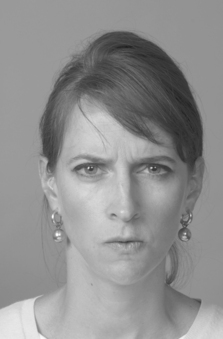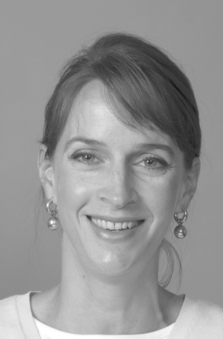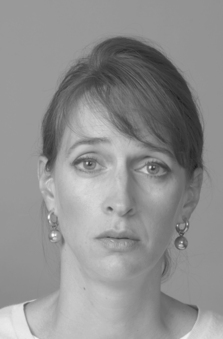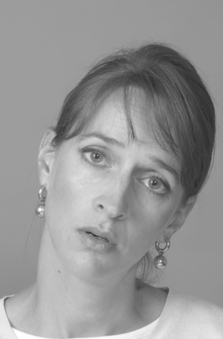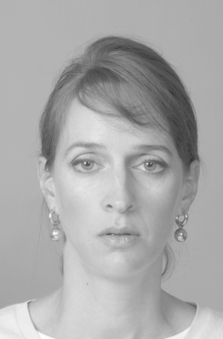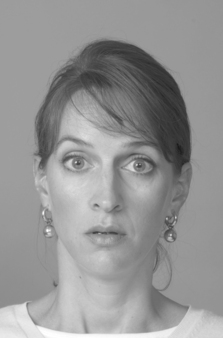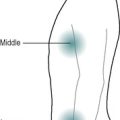Introduction
Emotion testing, as described in the previous chapter, involves the practitioner interacting with the patient to evoke an emotional response. Much assessment of the patient, however, is done by simple observation. This observation is important and involves three areas:
People in China, Japan and other East Asian countries are especially known for the skill of keeping ‘face’ and showing little in public of what is really going on inside them. Everyone does this to some degree, however, and most people literally have a ‘public face’ they tend to show the world as well as a ‘private face’. The remnants of people’s true emotional state can still be detected on the face, however, as these chronic emotional patterns become etched into people’s facial lines and reflected in the chronic holding of their facial muscles.
An example of this is someone who experiences significant degrees of frustration over a period of time. They can appear to have their eyebrows drawn together and develop what are called ‘Liver lines’. Liver lines are vertical lines on the forehead that have developed from holding an ‘angry’ face for long periods of time.
If we could read it, every human being carries his life in his face … On our features the fine chisels of thought and emotion are eternally at work.
(Alexander Smith, quoted in Auden and Kronenberger, 1962)
Sometimes, and especially if patients are trying to hide their emotions, the facial expression may appear on the face as a ‘micro’ emotion for only about a fifth of a second or less (see
Eckman, 2007, p. 220). Micro-emotions can also occur when the emotion is being inhibited and is outside the person’s consciousness. It is important for Five Element Constitutional Acupuncturists to learn to spot them on patients before they settle back to showing their ‘public face’.
Posture can also provide the practitioner with insights into the state of a person’s body, mind and spirit. Whilst people may try to hide their facial expression, their posture and gestures are harder to disguise and tend to indicate what is going on below the surface. Over time patients also develop chronic physical holding patterns. For example, a Fire CF may have an underdeveloped chest or an Earth CF may slump in the area of the middle jiao.
It is important for practitioners to learn to recognise these postures and gestures and the fleeting or more long lasting facial expressions. They may be key methods of discovering people’s primary emotional imbalance and their CF.
The following descriptions of these indications are arranged Element by Element and by the facial expression, posture and gestures within each Element.
The Wood Element: facial expression, posture and gestures
Facial expression
An angry facial expression is shown in
Figure 26.1 below. Frequent feelings of frustration and anger may become etched in the lines between the eyebrows, the look in the eyes or the set of the mouth and jaw. The brows, eyes and jaw are all especially involved in the facial expression of anger.
• The brows are drawn together and lowered, creating two vertical lines between the eyes. As was stated above, a person who is habitually angry may have these ‘Liver lines’ deeply engraved onto the forehead.
Table 26.1. Facial expression, posture and gestures – anger
|
| Face |
Brows |
Lowered and drawn together, vertical lines appear between the brows |
|
|
Lids |
Lower lid tense, may or may not be raised. Upper lid tense, may be lowered by brow |
|
|
Eyes |
Hard stare |
|
|
Lips |
Pressed together firmly |
|
|
Jaw |
Tense, may jut out |
| Posture |
|
Body may be erect, muscles tighten. May be a slight move forward |
| Gestures |
|
Emphasised. Can be jerky. May point or make a fist |
| Breathing |
|
Loud, rapid, shallow, irregular |
• The area around the eyes may be affected. The lower lid will be tense, causing the area under the eye to rise upwards. At the same time the upper lid moves down following the movement of the brows. This pushes against the upper part of the eyes, causing them to narrow. As a result of these movements the eyes look intense: fixed, hard and staring. Holding this expression may result in a tight aching feeling behind or around the eyes. Anger is the only emotion where the lower eyelid tenses.
• The jaw and mouth may take on a number of positions. People who are angry may purse their lips or pull in their lips and hold them firmly together. This ‘tight-lipped’ expression usually indicates that a person wants to hold back their expression of anger. It is as if by keeping their mouths firmly closed they don’t let out what they really want to say. It is interesting to note that the deep pathway of the Liver circles the mouth on the inside of the lips in the orbicularis oris muscle. This is the muscle that pulls in the mouth.
Suppressed anger may also cause a person’s jaw to become tense and people who are habitually angry will often be locked or tight in this area. People who grind their teeth at night usually do so because their jaw is tense. Their tense jaw becomes even tighter while they sleep. Sometimes tension in the jaw causes it to jut out and be held slightly upwards. This gives the person an appearance of slight defiance.
Although the colour on the face of a Wood CF is green, people who are angry may also redden as they feel the heat of their anger and frustration welling up inside. (For more on the facial expression of anger, see
Ekman and Friesen, 2003, p. 78.)
Posture
The posture of someone who is angry is likely to be erect. The qi rises and people can appear to expand in size. In addition, there is often a very slight movement forward. Although not necessarily overtly attacking, there is an underlying sense of aggression and pushing forwards towards the other person.
When a person has been chronically angry for long periods of time, the ligaments and tendons often lose elasticity and become tight. An extreme example is a soldier on parade, standing stiffly to attention, expanding his chest, thrusting his face forward and giving a jerky salute. As well as the jaw, which was discussed above, the neck, shoulders, hips and lower back can also be tense and possibly the musculature of the whole body. A practitioner may notice that when holding the patient’s arm to take pulses that the arm is left somewhat stuck in space when released. It remains tense and does not easily move back to its previous position. Tight ligaments in the feet may cause the toes to pull up and back.
Often a Wood CF’s body may appear ‘packed’ and solid and tightly held together or squashed down as if not allowed to push upwards and to grow to its full size. The packed quality is the opposite of the expansion described above and will develop when anger has been suppressed.
Gestures
The gestures of someone who has long-term problems with anger tend to be aggressive and jerky. The person may point aggressively at people, make a fist or gesture with their hands in an abrupt and jerky manner.
Breathing
Anger will immediately change a person’s breathing. It may become louder, more rapid and more irregular as well as shallower. Anger can cause a person to have difficulty breathing in and out smoothly. As a result, Wood CFs often sigh a lot, the sigh being a way of releasing the tension felt in the chest.
